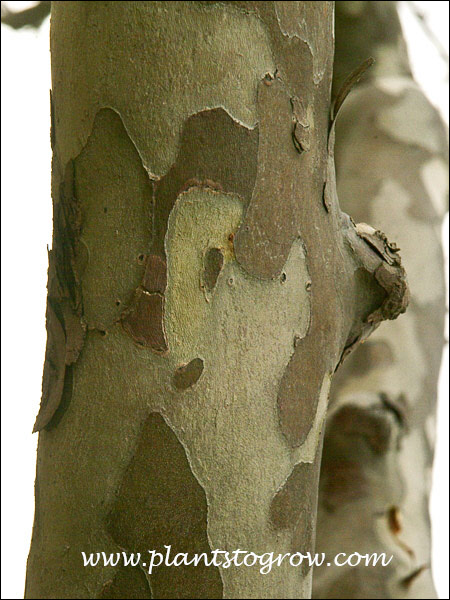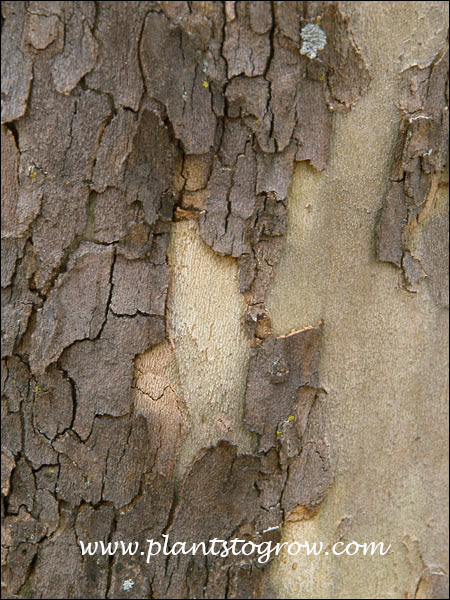| Description | Sycamore (Plantanus occidentalis) is a large growing tree with colorful exfoliating bark |
|---|---|
| Pronunciation | (PLAT-a-nus)(ok-si-den-TA-lis) |
| Plant Type | All Plants, Trees Deciduous |
| Hardiness Zone | 4-9 |
| Sunlight | full |
| Moisture | average |
| Soil & Site | average, tolerates moist to wetter soils , it is native to river bottoms |
| Flowers | monoecious, not showy |
| Fruit | fruit is a syncarp (looks like a water mine used in World War 2) |
| Leaves | green, alternate simple leaves, 3-5 large lobes, triangular in shape |
| Stems | outer bark red to brown, inner color white to cream, exfoliating bark |
| Dimensions | can reach 75-100 feet in optimum growing sites |
| Propagation | seeds, cuttings |
| Misc Facts | Genus name comes from the Greek word, platanos, for the oriental plane tree (P. orientalis). Specific epithet (genus) means Western (#148). AKA: American Sycamore, Eastern Sycamore, buttonwood or buttonball tree |
| Author's Notes | I have seen very large mature trees. They usually have excellent exfoliating, colorful bark. |
| Notes & Reference | #01-Manual of Woody Landscape Plants (Michael Dirr), #93-North American Landscape Trees (Arthur Lee Jacobson), #144-Missouri Botanical Gardens web site (www.missouribotanicalgarden.org) |

Cart


